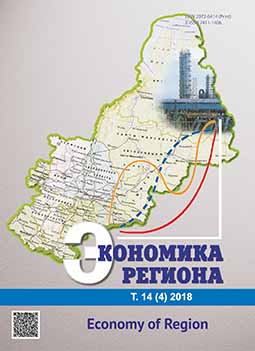Агент-ориентированная модель Евразии и имитация реализации крупных инфраструктурных проектов
An Agent-Based Model of Eurasia and Simulation of Consequences of Large Infrastructure Projects
Author(s): Valeriy Leonidovich Makarov, Albert Raufovich Bakhtizin, Elena Davidovna Sushko, Alina Fagimovna AgeevaSubject(s): Social Sciences, Economy, Geography, Regional studies
Published by: Институт экономики Уральского отделения Российской академии наук
Keywords: ;digital simulation of systems; agent-based modeling; artificial society; demography; types of population reproduction; international migration; labour migration; analysis of migration processes
Summary/Abstract: The implementation of large infrastructure projects has a significant impact on the spatial location of production and change of trade flows. It causes the changes in migration flows and influences the socio-economic development of territories involved in the project. Preliminary assessment of the consequences of the implementation of similar projects requires the use of models. One of the modern directions of simulating is the agent-based approach. It allows to recreate a structure and behaviour of real socioeconomic systems in an artificial environment and to imitate their behaviour if external conditions change. The realism of the simulation of the main socio-economic processes determines the success of pursuing agent-based models to meet the challenges of forecasting. The article describes the construction of the agent-based model of the countries of Eurasia, imitating the basic processes of population movement in these countries, as well as the consequences of implementing large infrastructure projects as a result of the actions of many independent agents. There are two types of agents in the model: a) countries that are capable of lobbying for the implementation of profitable projects, and b) people who live in these countries, who create families, give birth to children and choose the type of activity and place of residence. In agents behaviour’s algorithm, we consider factors, revealed as a result of the research of actual migration processes in the countries of Eurasia. This has allowed to recreate in the model the imitation of people’s behaviour close to reality. The model construction was tested for two routes of New Silk Road. During the experiments, we monitored the changes of economic and demographic indicators for each participating country. Thus, for Russia the growth of total trade turnover (9.6 %) and net export (1.5 %) was observed. Participation in the project gave to China the growth 3.8 % and 7.7 %, respectively. The small countries (Georgia, Bulgaria) showed the reduction of migration outflow and improvement of age structure of the population. The model can be used for preliminary assessment of the consequences of the large infrastructure projects implementation.
Journal: Экономика региона
- Issue Year: 14/2018
- Issue No: 4
- Page Range: 1102-1116
- Page Count: 15
- Language: Russian

